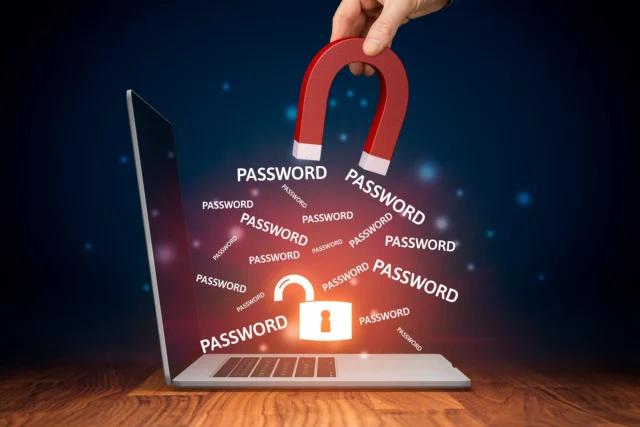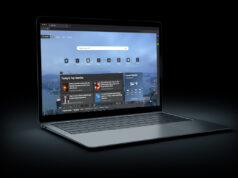
“You will be hacked if you spend more money on coffee than on IT security.” Furthermore, you deserve to be hacked”—Richard Clarke, a former US government counterterrorism specialist
Businesses that fail to deploy adequate countermeasures are sailing in cyber-criminal-infested waters today, as the cyber security landscape evolves at a rapid pace. With ever-evolving dangers and major data breaches, every organization must implement preventative best practices.
Cyberattacks will cost global corporations a total of $8 trillion between 2017 and 2024, according to a Juniper Research prediction. The cost of cyberattacks is expected to rise 30% over the same time period, but cybersecurity spending is expected to rise only 8%. Is it true that companies spend more money on coffee meetings than on IT security?
The following are five prevalent types of cyberattacks, as well as how businesses can protect themselves:
1. Attacks Using Passwords

Hackers utilize password guessing and password-cracking software, among other techniques and tools, to get access to usernames and passwords in a password-based assault.
Cyber crooks used VTech, a prominent online toy company with inadequate’s password security measures in late 2015, exposing the personal data of millions of users, including 6.4 million children.
These three suggestions can assist you in avoiding password-based attacks:
- Passwords that are long – A longer password is far more difficult to hack than a shorter password.
- Passwords that are unique – Use a unique combination of lower-case letters, upper-case letters, digits, and special characters when constructing passwords. Use special characters like @, #,? or * instead of merely letters and numbers.
- Passwords that are secure – Keep a close eye on your passwords. Your corporate email account password should not be the same as your personal email account password. Make sure your passwords are kept safe and updated on a regular basis.
As for our link details, can we add these sentences in the article: Also, the usage of encryption aids in preventing hackers from intercepting and stealing confidential data from your company that is being communicated over the Internet. The email security firm Trustifi makes use of both symmetrical and asymmetric encryption.
Their cryptography specialists are aware of the benefits and drawbacks of each technique and when to utilize one over the other. For data to be encrypted and decrypted, both ways require keys. Symmetric encryption is simple to implement because the same key is used for both data encryption and decryption. On the other hand, asymmetric encryption uses a public key for encryption and a private key for decryption.
2. DDOS (Distributed Denial-of-Service) Attacks
Scammers use a denial-of-service attack to send massive amounts of data to a website, leaving it useless for customers. Users are notified that the website is inaccessible, rather than being able to buy your products or obtain the information they require. And when your website is down, you’re losing out on potential customers.
Here are some techniques for limiting the impact of DoS attacks:
- Always keep an eye on the traffic. Keep a watch on website or network traffic with a traffic-monitoring tool to spot unusual occurrences like an unexpected rise in traffic. You can mitigate the impact of a DoS attack by detecting it early.
- Maintain your systems by keeping them up to date. Install the latest updates and security patches for anti-virus, firewall, and other intrusion-detection software on a regular basis to keep your systems secure.
- Be alert to your surroundings. Because a DoS assault can also be carried out by vandalizing a network cable or disconnecting your Internet connection, it’s critical to keep an eye on your physical connections for any unusual behavior.
3. Attacks by social engineers

Phishing is the most common form of social engineering, in which a victim receives an email purporting to be from a reliable source, but the message is intended to fool the victim into disclosing personal information such as passwords and banking information. A social engineering attack has been attempted if you’ve ever received an email from a Nigerian prince.
The Anti-Phishing Working Group reports that phishing attacks have increased by 65 percent in 2016. It’s also effective. Spear phishing — phishing emails tailored to a specific company or individual – accounts for roughly 95 percent of all successful cyber attacks on organizations.
- Educate your workers. By instilling a security-conscious culture in the workplace, attackers will be less likely to take advantage of users’ gullibility and deceive them into giving important information.
- Two-factor authentication should be implemented. Two-factor authentication means that accessing information requires more than just a username and password; it also requires a physical device, such as a card, phone, or fob, or a biometric, such as a fingerprint or voiceprint. Even if thieves figure out your password, they won’t be able to access your data because of this extra layer of security.
- Take precautions. If you’re not sure about the legitimacy of a link embedded in an email, don’t click it. Furthermore, double-check website URLs for any minor modifications to the domain name that could lead you to a scammer’s site.
- Dispose of office trash in a secure manner. Documents holding confidential company information should not be discarded carelessly since they could end up in the wrong hands.
- Make use of phishing detection software. To assist you to notice any unusual behavior, use up-to-date anti-virus software, email filters, firewalls, and other anti-phishing technologies from third-party vendors.
- Make use of your common sense. If you receive an email offering big money if you act quickly, consider twice before answering. Why should you respond to that congratulations message if you’ve never applied for that job or entered that sweepstakes?
4. Attacks by a man-in-the-middle
A man-in-the-middle attack occurs when a hacker enters a communication session between two parties and eavesdrops or impersonates one of the parties with the purpose of collecting sensitive information, as the term implies.
Here are several techniques to prevent being caught in the middle of a man-in-the-middle attack:
- Pay heed to security certificate warnings: If your browser informs you that “This site’s security certificate is not trusted!” the site is unsafe and vulnerable to a man-in-the-middle attack.
- Websites that support HTTPS are preferred. The ‘S’ at the end stands for “secure,” meaning that no one else can see what you’re saying.
- Make use of encrypted networks. When using public Wi-Fi networks, use virtual private network (VPN) services to protect your communications from third parties. Install and update anti-virus software on a regular basis to keep your online activities safe and confidential.
5. Malware assaults

Malware stands for malicious software, which is software that is designed to harm or disable a computer. Viruses, worms, ransomware, Trojan horses, spyware, and backdoors are examples of prevalent malware.
CryptoLocker ransomware locked victims’ data in 2013 and demanded a ransom payment to recover them. Within 100 days, the spyware had made its authors millions of dollars.
Here are a few techniques to keep malware from infecting your computer:
- Take your time and look around. Don’t open malicious email attachments or download strange files. Avoid clicking on unexpected links and visiting shady websites that could infect your computer with malware.
- Make use of high-quality software. Make sure you have up-to-date anti-virus and firewall software installed on your computer. Keeping your system up to date closes the gaps that hackers can use to infect your system with malware.
- Take action right away. If you notice any evidence of malware activity, respond quickly before the damage worsens.
In today’s quickly changing cyber-security scene, mitigating the risk of online fraud necessitates a multi-layered approach that incorporates numerous strategies. Businesses may keep their activities safe from cybercrime by installing proper preventive measures and avoiding spending more on coffee than on IT security. Indeed, you need to know how to backup vmware virtual machine. (click here for a 60-day free trial)







